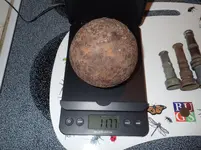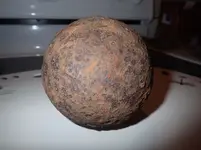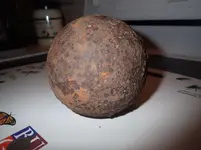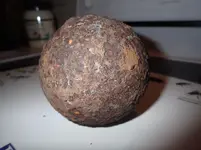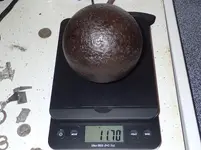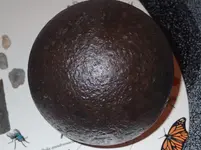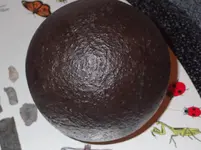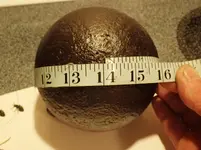Kurios1
Silver Member
- Joined
- Feb 25, 2017
- Messages
- 3,766
- Reaction score
- 7,383
- Golden Thread
- 0
- Location
- FEMA REGION 5 North Central Illinois
- Detector(s) used
- Nokta Impact Whites DFX 300 & M6 Matrix, Minelab Explorer II (2), Makro Red Racer & Racer 2, Garrett AT Pro.
- Primary Interest:
- All Treasure Hunting
Howdy Folks. I have this nearly 4.5 inch and 12 pound solid iron "ball" I recovered many years ago from a construction sight. I had never done a thing with it until my neighbor volunteered to run it through his electrolysis tank several times. Well, the difference is night & day. It looks cool as all get out and I absolutely love the "new" look. One question that remains is, Is it indeed a cannon ball or something else. Part of me doesn't want to know but, I truly believe it's a cannon ball and do want to positively ID the find. I have contacted Cannon Ball Guy and hope he will chime in on the after photos and give me his opinion. It's a nice conversation piece whatever it is. Thanks for any opinions or information of this large round iron ball. Kurios1
